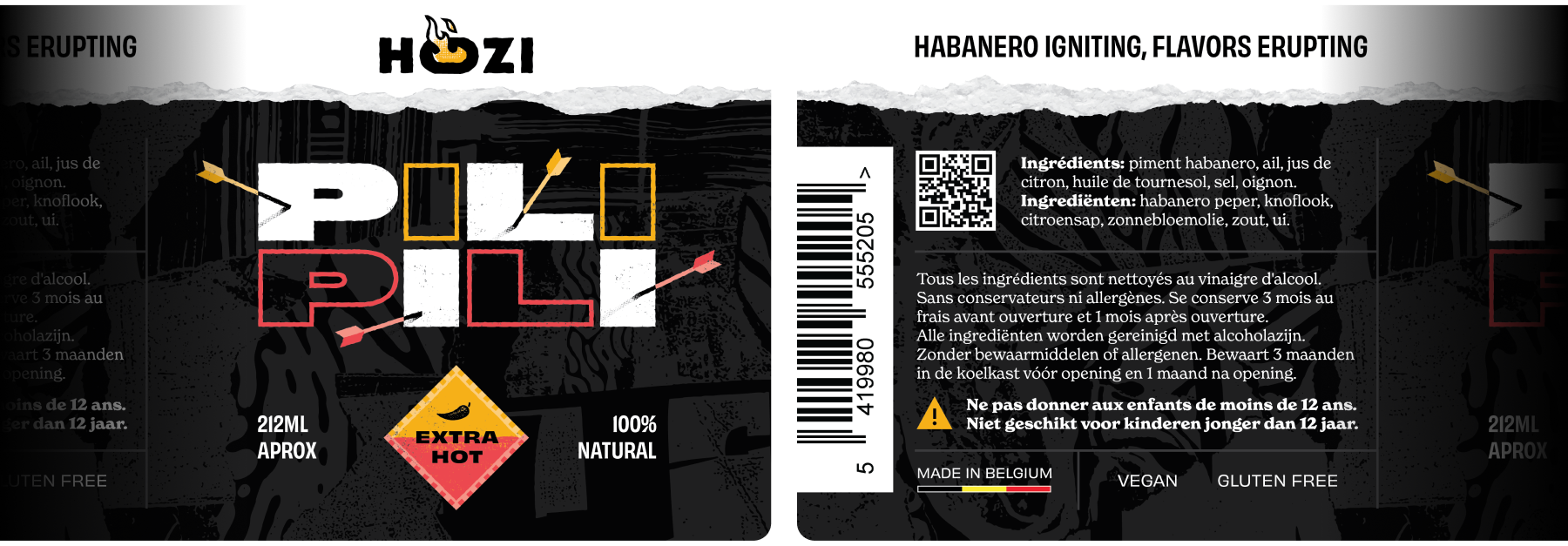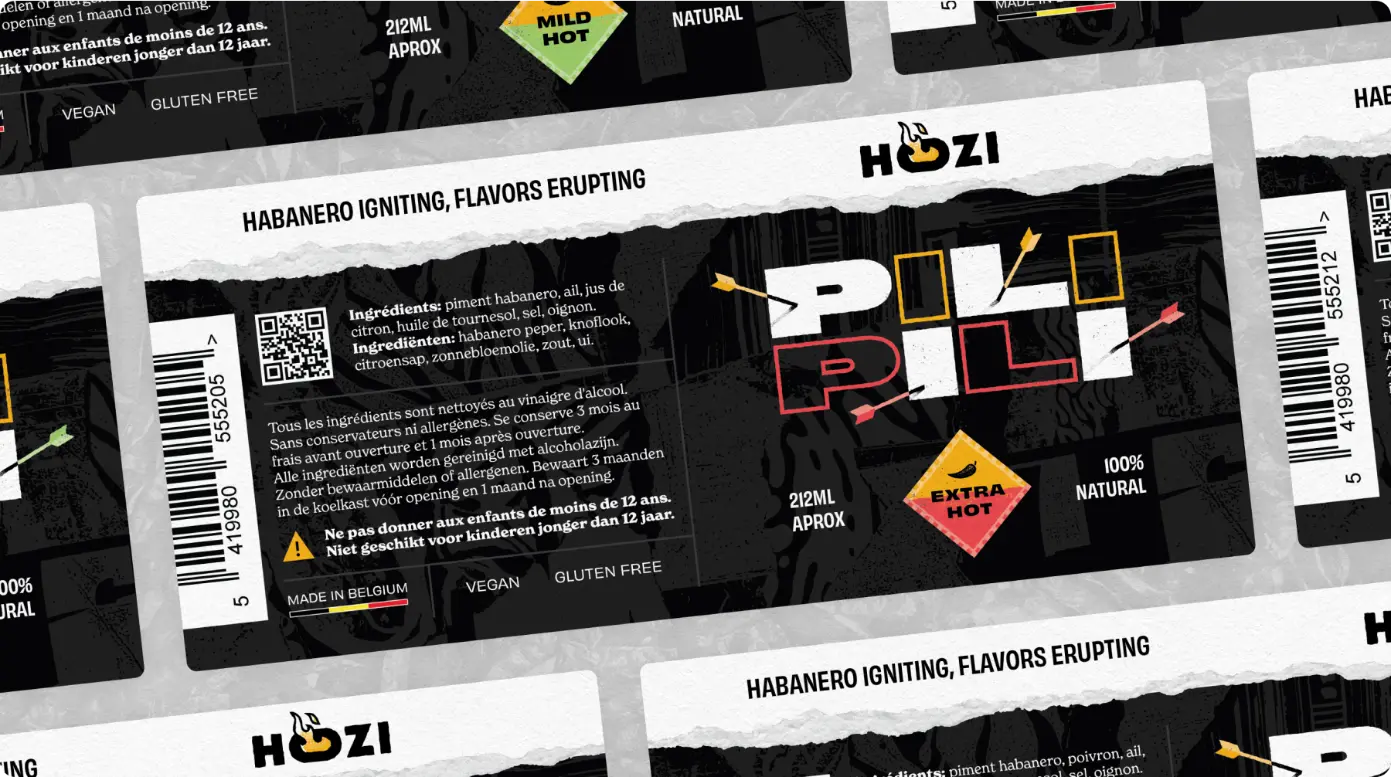Hozi sauce
Straight from a home kitchen in Kinshasa, the fiery and flavorful Hozi pili-pili sauce was born in 2012. Created by Hoziba Chifundera Hortense, this homemade recipe quickly gained a loyal following thanks to its bold, exotic flavors. Whether added to stews, Bolognese, tajines, or blended into mayonnaise or tartar sauce, Hozi brings a distinctive kick to any dish. What started as a personal culinary creation has evolved into a promising local food brand, now attracting a growing community of spice enthusiasts.
- Website
- Food & Restaurant
- Standard
- Logo
- Photography
50:00 hours
Our mission
The Hozi project was about much more than creating packaging—it was about transforming a personal recipe into a brand with real market potential. From identity to shelf presence, every design choice was rooted in Hortense’s story, her product’s uniqueness, and the cultural roots of the sauce.
We began by working closely with Hortense to understand the essence of Hozi: a powerful, homemade sauce full of personality and tradition. This insight guided the creation of a visual identity that would not only speak to the product’s spiciness but also express authenticity and pride in its Congolese origins.
The centerpiece of the branding effort was the Hozi logo—a simple yet striking mark featuring a flame, symbolizing the heat and energy of the sauce. From there, we developed a full visual language: typography, color palette, and packaging style that would support the product's character and stand out in the crowded supermarket space.
Once the identity was in place, we moved on to packaging and label design, ensuring that the final result was not only visually compelling but also compliant and functional.
The launch was a success: Hozi sauces made their way into various supermarkets across Brabant Wallon, Belgium, with customers—and our team—quickly becoming fans of the bold flavor and equally bold presentation.


01
Product Label Design
Development of two labels—Extra Hot and Mild Hot—with designs that reflect intensity while incorporating subtle references to Kivu, Hortense’s region of origin.
02
Packaging & Regulatory Info
Labels were built to balance design with clarity—ingredients, quantities, and allergens were presented clearly and accessibly.
03
Photography
We also documented the behind-the-scenes process of making a handcrafted spicy sauce. The goal was to tell the story of the sauce from raw ingredients to bottled product—highlighting the textures and intensity that go into every jar.
We shot everything in her own kitchen, the same space where she crafts each batch by hand, giving the sauce its homemade character and authentic, small-scale charm.
04
Website
Last but not least, we setup a simple website to showcase the 2 sauces that she produces. It might become an E-commerce in the future.
Similar projects

Julie’s House
- Food & Restaurant
- Custom
- Website
- Ecommerce
Julie’s House was born from Julie’s childhood dream of a dollhouse made of cake. Fueled by her passion for sweets and honed by her pastry training at Spermalie and Ter Groene Poort...

Caromela
- Food & Restaurant
- Standard
- Website
- Blog
Caromela SA was born from Jean-Noël Caro’s vision to create a platform dedicated to distributing premium food brands, starting with Valrhona Selection, in Switzerland. Backed by ov...

Les Vents d’Anges
- Food & Restaurant
- Standard
- Website
- Ecommerce
- Events
- Blog
Passionate about French wines for many years, we founded Vininvest in 2003 with the desire to share our love of wine. Through “Les Vents d’Anges,” we offer a selection of our fines...





